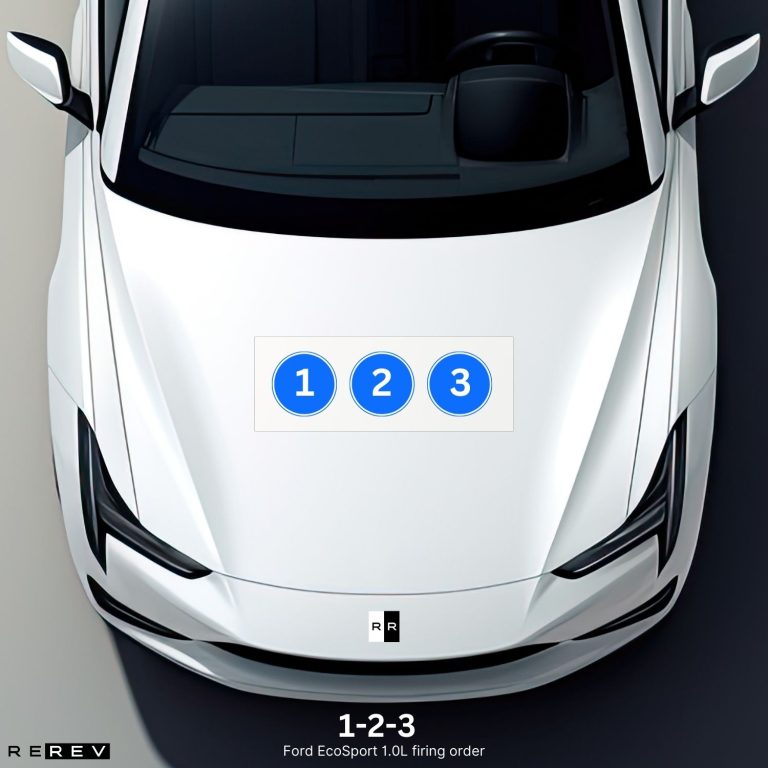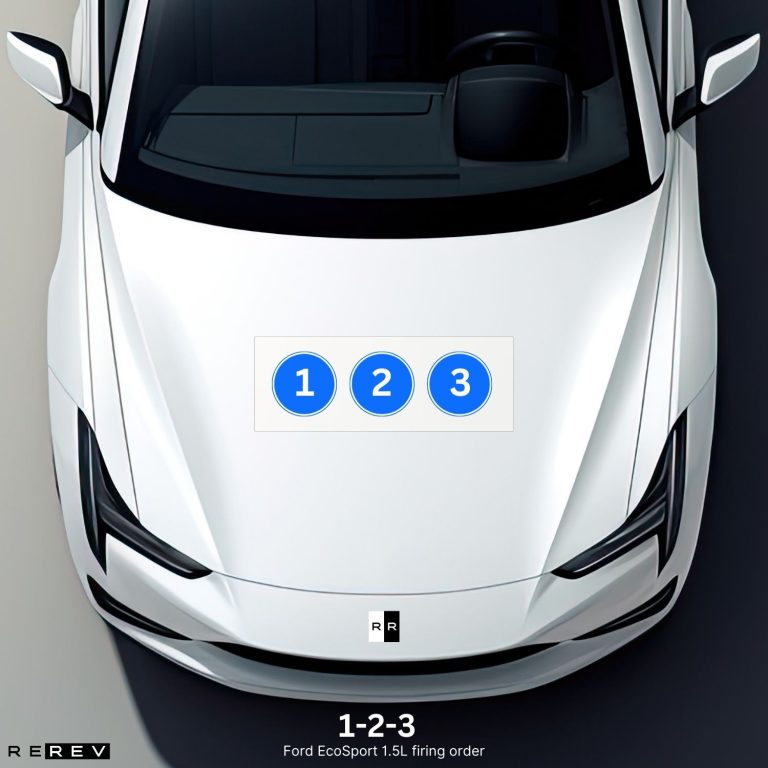Ford EcoSport (2003-2022) firing order — diagram & guide

For drivers looking for a compact crossover, Ford introduced the EcoSport back in 2003 and it became one of its best-selling models in this category. Over the years and two generations of the model, several different engine options have been used and most of them proved to be pretty durable.
Still, car enthusiasts are often confused by the Ford EcoSport (2003-2022) firing order and we’ll clear all of your doubts through this guide. Not only will we discuss the differences in the firing orders, but we’ll also go through the main details of the cylinder configuration for each of these, so let’s proceed together.
| CAR MODEL YEAR | ENGINE | FIRING ORDER |
|---|---|---|
| 2003-2012 Ford EcoSport (1st Gen) | 1.6L Zetec | 1-3-4-2 |
| 2.0L Duratec I4 | 1-3-4-2 | |
| 2013-2022 Ford EcoSport (2nd Gen) | 1.0L EcoBoost | 1-2-3 |
| 1.5L I3 | 1-2-3 | |
| 2.0L Duratec | 1-3-4-2 | |
| 1.5L Duratorq diesel | 1-3-4-2 |
First-generation Ford EcoSport (2003-2012) firing order
For the first generation of the Ford EcoSport, we had just a few engine options. The base option was a 1.6-liter Zetec petrol engine, but later on, a 2.0-liter Duratec was added to complete the selection.
Ford EcoSport 1.6L firing order

The Ford EcoSport 1.6L firing order is 1-3-4-2 and the cylinders of this engine are laid out from left to right. So, the first cylinder is the left-most one, and the simple configuration allows you to check up on the engine’s cylinders yourself without the help of a professional mechanic.
However, if you venture into DIY repairs, it’s crucial to state that this engine requires timely replacements of the spark plugs and ignition coils as they often lead to misfires.
Ford EcoSport 2.0L firing order

Moving on, we have the 2.0-liter four-cylinder petrol engine, and the Ford EcoSport 2.0L firing order is 1-3-4-2. The Duratec engine features the same firing order and the matching cylinder configuration as the lower-capacity Zetec.
In other words, cylinders go from 1 to 4 looking at it from the left side of the engine bay toward the right one from a mechanic’s perspective outside of the car.
Second-generation Ford EcoSport (2013-2022) firing order
Unlike the first-gen model, the second generation of the Ford EcoSport featured a few more engine options. The 2.0-liter Duratec stuck around for one more generation, but we’ve also seen some upgrades.
Most notably it was the addition of three-cylinder low-capacity engines that made the engine selection more diverse, so let’s dive into the specs, shall we?
Ford EcoSport 1.0L firing order

For the first option we’ll mention, we have the three-cylinder 1.0-liter EcoBoost engine. This compact turbocharged engine features a firing order of 1-2-3 and the cylinders are laid out from left to right going 1, 2, and 3 as the right-most cylinder.
Ford EcoSport 1.5L firing order

Another three-cylinder engine is the 1.5-liter engine and the firing order for this one is also 1-2-3. As you might have guessed, the cylinders are laid out from left to right and this one is pretty similar to the 1.0-liter engine.
At least this means you can’t mix up the two and it’s easy to apply the firing order for both of these as they are matching.
Ford EcoSport 1.5L Duratorq firing order

Finally, we have yet another 1.5-liter engine but this time it’s way different from the petrol one. The Duratorq engine is a diesel-powered one and it has one more cylinder as it’s a straight-four. So, the Ford EcoSport 1.5L Duratorq firing order is 1-3-4-2 and the cylinders are laid out 1, 2, 3, and 4 from left to right.
The Duratorq engine doesn’t have spark plugs as it’s a diesel powertrain, so that makes your job at least easier in terms of misfires. Still, it’s possible to use the firing order to cater to fuel delivery and stalling issues, so make sure to differentiate this 1.5-liter engine from the petrol one.
Our take
As it turns out, the EcoSport had way more engine options than you might have assumed for a compact CUV. Most of them were reliable, but you can extend the life cycle of each of the mentioned engines through proper DIY care and application of the firing orders listed in this guide.
With that in mind, we hope you’ll have an easier time maintaining your engine after reading this guide, and feel free to check our guides on specific engines if you need more information.